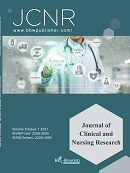Clinical Study of Acupotomy Trinity Lysis Combined with Rehabilitation Training for Spastic Paralysis after Stroke
Abstract
Objective: To study the clinical efficacy of acupotomy trinity lysis combined with rehabilitation training in the treatment of spastic paralysis after stroke, and to provide guidance for clinical diagnosis and treatment. Methods: From July 2019 to November 2020, 119 patients with post-stroke spastic paralysis who were admitted to our hospital's encephalopathy department were selected as the research objects, and 61 patients were divided into acupuncture combined with rehabilitation training group as the observation group by random number table method. 58 patients were divided into the rehabilitation training group as the control group. After 21 days of treatment, they passed the modified Ashworth Spasm Scale (MAS) grading scale score, Clinical Spasm Index (clinical spasm index, CSI) assessment, Fugl-Meyer exercise function scale (FMA) ) Score, Modified Barthel Index Score, and compare the clinical efficacy after treatment. Results: After treatment, the total effective rate of the observation group (95.08%) was higher than that of the control group (86.21%), and the difference was statistically significant (P?0.05); Before treatment, the contrast difference of MAS, FMA, CSI scores and modified Barthel index scores of the two groups of patients is not statistically significant; After treatment, the MAS scores and CSI scores of the elbow and knee joints of the observation group [(1.52±0.81)(1.46±0.83)(5.87±2.12)] were significantly lower than those of the control group [(2.17±0.68) (2.03±0.79)( 8.36±2.41)]; FMA upper limb and lower limb scores and modified Barthel index [(51.87±4.41)(30.21±5.05)(72.41±5.81)] of the observation group were significantly higher than those of the control group [(44.26±4.78)(28.45) ±4.23) (68.65±6.09)], the difference was statistically significant (P<0.05). Conclusion: Acupotomy trinity lysis combined with rehabilitation training is effective in treating patients with post-stroke spastic paralysis. It provides a safe, reliable and clinically effective new program, which is worthy of popularization and application.


